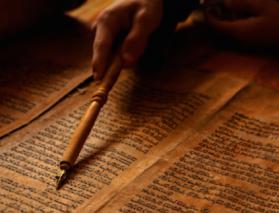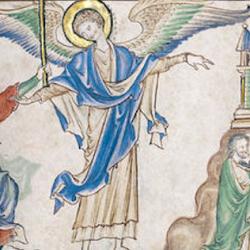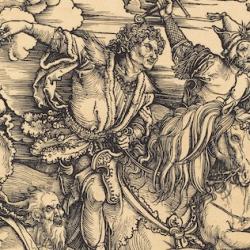The first song of the heavenly choir is sung by the four living creatures (Revelation 4:8). They sing not of creation or redemption, but of God Himself.
The song is an intricate knot of intersecting structures. There is, first, a simple chiasm:
A. Triple “holy”
B. Three titles: Lord, God, Pantokrator
A’. Triple name: “He who was, is, comes”
This is equally a triad of triads, a trinity of trinities, and perhaps is to be linked with the Triune name:
The Father holy, the Son Lord, the Spirit the One who was, is, comes. Or, the Father Holy, the Son Holy, the Spirit holy; the Son Lord, the Father God, the Spirit Almighty; the Father who was, the Son who is, the Spirit who comes, Father past, son present, Spirit future.
Though the song does not speak of creation, the structure suggests that the God named is the sevenfold Creator of a sevenfold creation. Seven different substantive words are used in verse 8: holy, Lord, God, Almighty, was, is, comes. Perhaps these link with the days of creation: Pantokrator is a good “fourth-day” title, and “the One who comes” is Sabbatical. When the repetitions, the articles, and the conjunctions are added, the total number of words is 16, 2 x 8. And they are arranged in phrases that have an increasing number of words: 3 words, 5 words, 8 words. The Triune Holy moves through the five-word name of power and military might to the eight-word name of new creation.
Rhymes and assonance add to the power of the song. six of the 9 substantive terms end in – os . The first five are hagios , hagios , hagios , kurios , theos , and the last word of the song is erchomenos . The definite article, always in the nominative masculine ( ho ), is repeated five times, and creates a breathy overtone, especially when combined with the ” ha -” of hagios .










